Launching an Electronic Magazine: An Overview of Value-added Features and Services
As a partner in the Exploit Project, funded under the EU Telematics for Libraries program, UKOLN will be delivering the first issue of ‘Exploit Interactive’ early in the new year.
We took the opportunity to review a wide variety of electronic publications as part of the research phase for the development of a prototype. These publications included journals, magazines and newspapers in the UK, US and the EU. The aim of the review was to identify any value-added features and services for both users and publishers that could be delivered or used in an electronic magazine; though not necessarily for inclusion in Exploit Interactive.
The value-added features and services included: peer review software, the automation of editorial and publishing functions, personalisation, targeted email, email versions of the magazine or tables of contents previews, interactive games and puzzles, chat services, printer-friendly versions, electronic commerce, user state analysis, etc. To find examples of some of the services, including personalisation, it was necessary to look beyond the web journals and magazines to some of the popular portal sites (Internet entry sites), and commercial web sites.
The value-added options and issues:
The inclusion of the value-added features and services are, of course, dependent upon budget, staffing, and technical feasibility. Where many of the services can be delivered with the use of intelligent web server software, similar results can be achieved using client and server-side scripts and other options. Choosing the intelligent software route has, of course, costs and benefits for both the information provider and the user. With the latest software comes a suite of tools and applications for managing sites and the publishing process, analysing usage data, and collecting the valuable user information, often as part of the user registration for personalised services.
Personal Information
Using the popular personalisation features do require some knowledge about an individual’s interests and possibly behaviour. In some commercial web sites we see the user trading personal information, comprising a user profile which is stored in a database, for email notification of updates, news, personalised services such as a personal view of the site, and the like. This, of course, raises issues of privacy and trust, particularly where the information may be used for targeted advertising or shared with other information providers. With this, we’re seeing the nature of privacy statements changing; detailing methods used for tracking users and providing the personalised views. So for magazines moving away from the traditional print model, providing features and services requiring access to users’ personal information, consideration must be given to privacy statements and policies.
Privacy Statements/Policies
Microsoft’s Slate Magazine privacy statement [1], states that they explicitly ask when “personal information” is needed as in the case of their voluntary reader surveys, and that Slate uses cookie text files (not requiring “personal information”) for customising the reader’s view of the site.
The privacy policy [2]on the Snap site goes into more detail regarding personal information; noting that personal data may be requested when signing up for Snap’s personalized services, registering for contests, sweepstakes or other promotional programs, and goes on to explain that the information will not be disclosed to parties other than Snap and its parent companies in any way that personally identifies users without their prior permission.
The World Wide Web Consortium’s (W3C) Platform for Privacy Preferences Project (P3P) [3] is currently working on a platform that will allow users to be informed of the practices of a given web site. A number of companies have been publicly involved with P3P efforts. Although the P3P protocol is not yet complete, Engage Technologies, Firefly/Microsoft, Intermind, Lumeria, Microsoft, Netscape, Open Sesame and Microsystems have announced plans to implement within their products.
Adding Value: a few examples
The following magazines, journals, newspapers and general information web sites have been selected to demonstrate the types of value-added features and services that could be included in a web magazine:
Automation of editorial, publishing and refereeing functions:
- Conservation Ecology: a peer-reviewed journal for its Peer Review Software
- PhysChemComm: a new electronic-only refereed journal from The Royal Society of Chemistry noted for its automation of editorial, refereeing and publishing process, with its six week turn-around for published articles
General value-added features and services:
- The New England Journal of Medicine for its medical quizzes, classified section which includes career and jobs information, along with a personal archive for saving links to articles and searches of interest
- Ariadne Web Version for its metadata delivered via a server-side include (SSI) script
- C|net: News.Com for its article forwarding and printer-friendly versions of articles
- CLIC enhanced articles (The Royal Society of Chemistry) using 3D rotatable images
- The Irish Times for its Java and non-Java crossword puzzles
Forum for discussion:
- D-Lib Magazine for its integration of Hypernews within the magazine
- Slate Magazine for its email versions and well placed access to reader discussion groups
- SBN Magazine (Site Builder Network) for its well promoted live chat services
Personalisation:
- The Guardian Online for its personalised London Film Festival Planner
- My Yahoo, My Snap for personalised layout and news
Conservation Ecology Journal & Its Peer Review Software
The Conservation Ecology Project began in 1993 to address issues of cost, speed, and access to research findings in a rapidly changing and growing discipline. They found that electronic preparation of manuscripts and the use of Web technology, made it possible to conduct the entire peer-review process online. Conservation Ecology’s automation software has served as their editorial office for the electronic journal for over a year. The entire process of running the journal is automated; submission, editing, clerical steps to do with peer review, publication, distribution.
 Figure 1: Conservation Ecology: peer review | 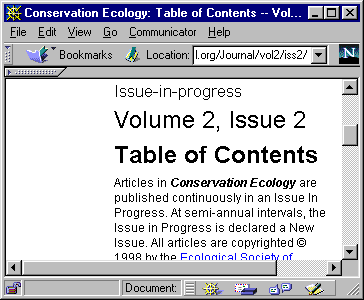 Figure 2: Issue-in-Progress: table of contents |
The project notes numerous benefits to the software that they had not anticipated when they initially set out to create an automated editorial office. One such benefit is archiving. All versions of manuscripts are archived by the software, along with a complete record of timing of all events associated with a particular manuscript. All correspondence with the software is logged automatically. Correspondence outside of the system can also be added to the log by designated users (i.e. editor-in-chief, sub-editor).
The journal uses a “double blind” review process, in which authors are not told who reviewed their paper and reviewers are not told who wrote the paper. The peer reviewers are informed as to the identity of authors only after the manuscript has been accepted or rejected.
Document conversion (word processing files to web-ready files) is also handled by the software. Accordingly, formatting a manuscript for submission to Conservation Ecology involves document formatting (e.g. references, units of measure), and file formatting which involves splitting the manuscript into the component files (e.g. article, figures, table files) required for processing by the software.
For more information about the Conservation Ecology Peer Review Software: http://www.consecol.org/Journal/consortium.html
The Royal Society of Chemistry’s new electronic-only journal:
PhysChemComm is an electronic communications journal dedicated to publishing innovative research covering all aspects of chemical physics. All aspects of the journal, from submission to publication, will be carried out in a purely electronic form, with the published articles existing in a fully searchable database. The automation of many of the editing and publishing functions results in a quick turn-around, allowing articles to be published within six weeks of submission, if accepted for publication. The refereeing process is also handled electronically via the Referee Report Form. Articles/manuscripts are “double-refereed” and, once published, will be treated by Chemical Abstracts and the ISI (citation index) as conventional papers.
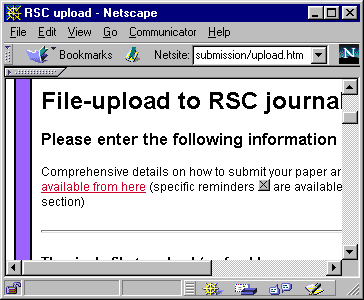 Figure 3: PhysChemComm File Upload |  Figure 4: Referee Report Form |
Articles can be submitted to the journal electronically via file upload, file transfer protocol (FTP) or on a diskette via conventional post (which they do not recommend). The file upload form can be viewed at http://www.rsc.org/is/journals/submission/upload.htm
PhysChemComm hopes to develop other possible aspects of electronic publishing, such as a live comments page. Along with the usually accepted graphics formats, the journal will accept graphics/video file types including MPEG, Quicktime, VRML, structure and spectra files, and proprietary file types familiar to the scientific community requiring browser plug-ins or viewers (PDB, CIF, MOL, JCAMP-dx). The file types mentioned are not currently being implemented in the journal, though expect to see PhysChemComm using the medium to its fullest in the future. The journal will be free for a trial period.
For more information on the PhysChemComm journal, see: http://www.rsc.org/is/journals/current/PhysChemComm/pccpub.htm
New England Journal of Medicine:
The Journal’s web site has been redesigned so that now there are two parts: a free, unrestricted area for all users, and an enlarged, subscriber-only area. The new area offers the print-version-subscribers access to the complete text of the Journal, including review articles, for all issues since 1993.
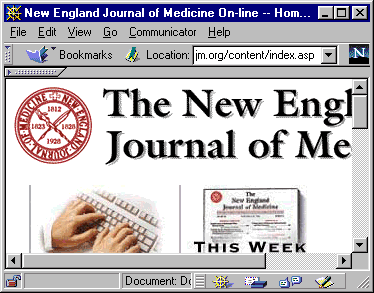 Figure 5: New England Journal of Medicine | 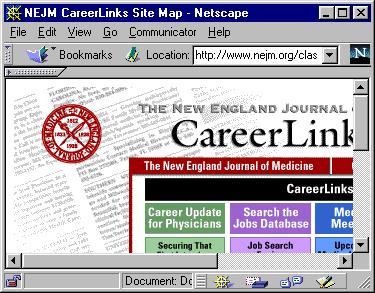 Figure 6: Career Development and Jobs Section |
The Journal’s suite of value-added services:
- Weekly table of contents via email
- Mailing list which requires registration but no subscription
- Interactive medical image quiz hyperlinked to related articles (using Microsoft’s Active Server Pages technology) http://www.nejm.org/content/scripts/icm/icm.asp
- Classified Ads section: http://www.nejm.org/classifieds/ with a form for submitting ads online
- Career development and Jobs section
- For subscribers there’s full-text search capability (by article, author, article category, issue number, page number, and date)
- Also within the subscriber-only area, the journal offers services such as a personal archive to be used for saving links to articles and searches, free software available for subscribers to download for printing the articles in a format that is virtually identical to that of the journal’s print format.
To view the New England Journal of Medicine: http://www.nejm.org/
Ariadne: Dublin Core Metadata
The Dublin Core metadata seen in the source code of Ariadne is being used as part of the NewsAgent project; an eLib funded project to provide a personalised current awareness service for library and information professionals.
UKOLN uses MS-Access database to create the Dublin Core records. To associate a resource with its metadata, resources are placed in separate files in the same directory on the Web server, with the name of the SOIF (the Summary Object Interchange Format) file being derived from the name of the HTML file.
In issue 10 of Ariadne, Andy Powell discusses the various models for the management of Dublin Core Metadata. He describes the model used for Ariadne Web Version, which makes use of a Server Side Include (SSI) script to embed Dublin Core metadata into the page on-the-fly. In the article he discusses the various models for management of the metadata, along with solutions for performance problems relating to the SSI scripts.[4]
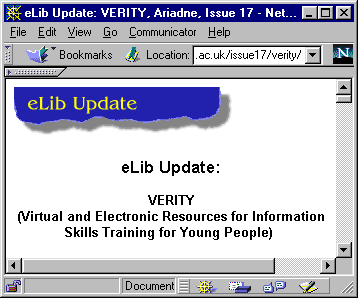 Figure 7: Article from issue 17 of Ariadne | 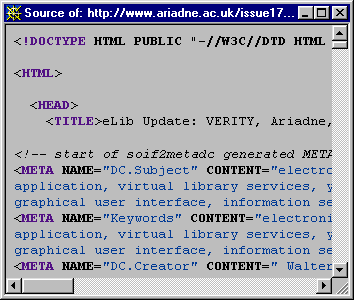 Figure 8: Source code showing metadata |
C|net: Article forwarding and Printing
C|net offers a number of value-added services and features under their collection of sites; accessible via one of their many domain names. The News.Com site shows the use of an article forwarding feature. This can be viewed by clicking on ‘Send this article to a friend’, at the top right-hand corner of one of the articles.
From the accompanying form, the user is able to include multiple email addressees, send an abstract or full-text version, and include a message for the recipients. Should the user wish to print the article from the site, he or she can select a printer-friendly version, though this comes complete with advertising.
To view C|net: News.Com:
http://www.news.com/
 Figure 9: C|net’s News.Com site |  Figure 10: C|net’s article forwarding |
The Royal Society of Chemistry’s CLIC Enhanced Articles:
The menu system in the left hand frame of figure 11 allows the user to navigate across all The Royal Society of Chemistry articles enhanced by The CLIC Consortium. The enhanced articles work best with Netscape Navigator 4.06. In order to view and rotate the 3D renderings, a Netscape plug-in, MDLI Chemscape Chime 1.1+ is required.
To view the CLIC enhanced articles: http://www.rsc.org/is/journals/clic_rsc/net_4.htm
 Figure 11: CLIC Enhanced Articles | 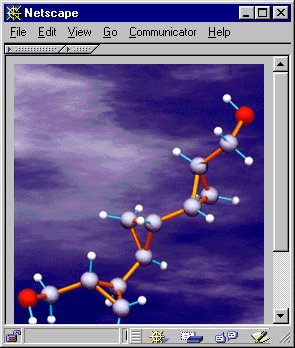 Figure 12: 3D - using MDLI Chemscape Chime |
The Irish Times: interactive games & puzzles
Familiar to many newspaper readers, whether print or electronic, is the crossword section. The Irish Times incarnation of the crossword is available to users with both older and newer browsers. With the Java version of the puzzle the user is able to write to the screen with the clues being crossed out once the user manages to type in the correct answer.
The Java and non-java versions of the puzzle (for browsers not supporting Java or cookies) can be seen at:
http://www.irish-times.com/crossword/index.cfm
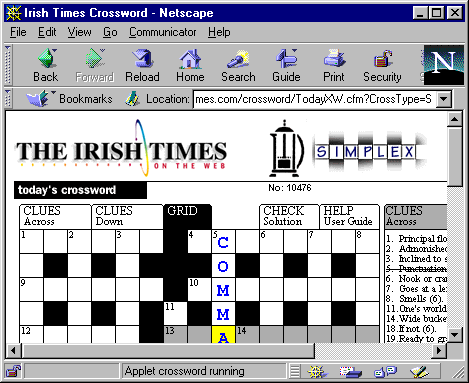
Figure 13: The Irish Times Java Applet Crossword
Providing a forum for discussion: D-Lib Magazine
D-lib Magazine, of the US D-lib Program for research in digital libraries, has integrated HyperNews [5] within the magazine. HyperNews, which is free, is a cross between the hypermedia of the WWW and Usenet News (commonly known as newsgroups). Users can become members of HyperNews or subscribe to a forum in order to get e-mail whenever a message is posted, so they don’t have to check the magazine to for new additions to a particular forum. This e-mail gateway is also bi-directional, so the user doesn’t have to find a web browser to reply. HyperNews then places the message in the appropriate forum.
HyperNews should be compatible with the standard CGI support provided by most Unix http servers. [6]
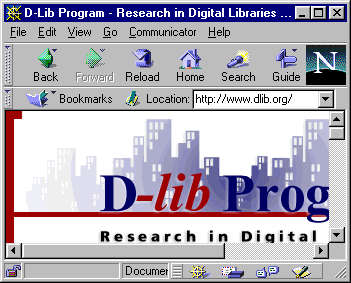 Figure 14: D-Lib Magazine | 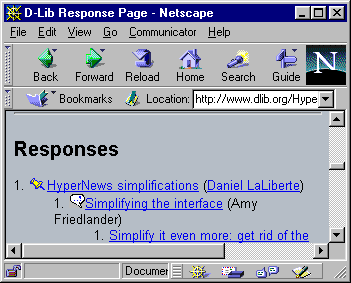 Figure 15: D-Lib’s HyperNews |
To view D-Lib Magazine and the HyperNews archive see:
http://www.dlib.org/
http://www.dlib.org/Hypernews/get/dlib_responses.html
Microsoft’s Slate Magazine: email and print delivery
Slate’s member services, which include personalisation, are accessible by subscription only. The magazine comes in print and electronic versions. Slate’s various options for delivery or access are a far cry from the local newsshop shelf; via AOL, Microsoft Network, HotMail, Web, etc.
The Fray Discussion Forum: From every section in Slate, the user is given the opportunity to jump (via hyperlink) into “The Fray” and share their thoughts on any given issue. The forum includes dozens of ongoing discussion “threads” on topics ranging from politics to religion to book reviews, which is suggested as a value-added alternative to the familiar “E-Mail to the Editors.”

Figure 16: Slate Magazine
View Slate Magazine at:
http://www.slate.com/toc/FrontPorch.asp
Microsoft’s SBN Magazine and the SBN chat services
Missing in many electronic magazines is the opportunity for spontaneous response and discussion… if not, debate. Though many sites do provide a email link or form for readers to respond to articles, many are not well used nor promoted. The SBN Magazine (Site Builder Network) demonstrates a well-promoted chat service. The chat area is actually part of the larger SBN site.
The SBN chat area is arguably unfairly restricted in the eyes of the non-accredited; open only to site members with a particular level of Microsoft accreditation. The goal of SBN appears to be that of creating a demand for its commercial services and products; the vehicle being the reward of chat area access, rather than the chat area access being the promoted product/service.
Perhaps the well promoted promise of a useful narrowly focussed discussion may be enough of an invitation to draw the right voices from a given community, and an enhancement to any online magazine.
SBN Live Chat:
http://www.microsoft.com/devtraining/chat/default.asp
SBN Magazine
http://www.microsoft.com/sitebuilder/magazine/default.asp
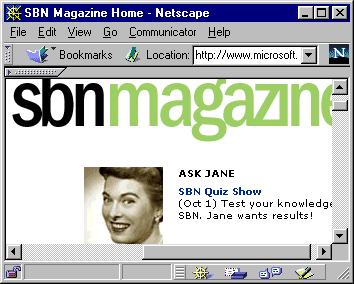 Figure 17: SBN Magazine | 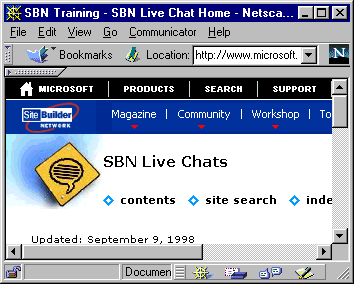 Figure 18: Site Builder Network (SBN) Chat |
The many faces of Personalisation
Though ‘personalisation’ seems to be the popular feature in the latest releases of intelligent server software, it is just one of many offerings. As can be expected, the software comes in all flavours and is priced accordingly. At the high end is content management software such as Vignette’s StoryServer 4, which supports personalisation. Microsoft’s Site Server 3.0, affordable with an educational discount, is being used by a number of groups within the UK Higher Education Community, including the eLib BUILDER project [7] , University of Essex Computing Service [8] , and the forthcoming Exploit Interactive.
Many of the general information/news and search sites use some sort of personalisation. Some of the earlier adopters offering users personalised content and layout include: My Yahoo, MSN, My Snap or Local Snap, My Excite.
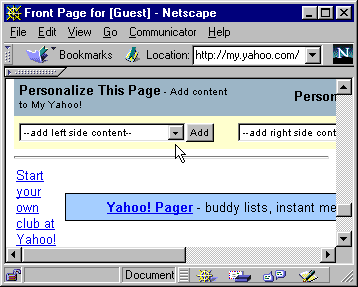 Figure 19: My Yahoo | 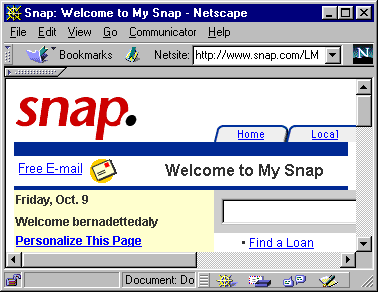 Figure 20: My Snap |
My Yahoo:
http://my.yahoo.com/?myHome
My Snap:
http://www.snap.com/LMOID/mysnap/mysnap/0,160,home-0,00.html?st.sn.fd.t.ms
Personalisation from The Guardian Online:
The Guardian Online is currently redeveloping the way they work. Their new system has at its heart Vignette’s StoryServer content management software. Liz Sarginson, of the Guardian, explained that the recently released version 4 is being used for the development of a number of new sites; the first site, Jobsunlimited will be going live shortly and will be followed by Footballunlimited.
Although the latest release of StoryServer has built-in personalisation, the Guardian began its developing with an earlier version and had built their own personalisation system. It is expected that over time, they will no doubt use the facilities available in version 4 and later releases of the software.
The London Film Festival site which is sponsored and produced by the Guardian is offering a Personalised Festival Planner. The personalisation here is being accomplished with the use of CGI scripting.
Personalised Festival Planner:
http://www.lff.org.uk/cgi-bin/lff/lff_planner.pl
View The Guardian Online at:
http://www.guardian.co.uk/
 Figure 21: The Guardian Online |  Figure 22: London Film Festival Personalised Festival Planner |
Summary
This article has identified many features and services currently available to users on the Web. Whether these options can be successfully implemented and managed within the context of an electronic magazine would depend of course on budget, staffing and technical feasibility within the given organisation. The adoption of more intelligent server software, along with the automation of many of the traditional submission, editing, refereeing, and publishing functions should lead to a new breed of Web magazines and journals. This would benefit not only the users, but also the authors, and those involved in some of the more tedious administrative tasks involved with the publishing of an electronic magazine.
Some of the most advanced examples of electronic magazines and journals available on the Web are within the scientific community. These publications do begin to exploit the Web and are leaving behind former print based models.
In launching a new Web magazine, the goal is to not only produce a magazine with rich and timely content; but also to present the user with a well-managed package that hopefully will be well received and used, adding value where many print model magazines and journals leave off.
References:
- Slate:
http://www.microsoft-online-sales.com/slate.asp - Snap privacy policy:
http://www.snap.com/main/register/problems/0,135,home-0,00.html - W3C P3P:
http://www.w3.org/P3P/Overview.html - Ariadne Web Version
http://www.ariadne.ac.uk/ - What is HyperNews?
http://www.hypernews.org/HyperNews/get/hypernews/about.html - HyperNews Compatability
http://www.hypernews.org/HyperNews/get/hypernews/compatibility.html - The BUILDER Project
http://builder.bham.ac.uk/startmenu/welcome.asp - University of Essex Computing Service
http://www2.essex.ac.uk/webauthoring/Default.asp
Author Details
Bernadette DalyInformation Officer, Co-editor of Ariadne web version and Exploit Interactive
UKOLN: UK Office for Library & Information Networking
University of Bath, Bath, BA2 7AY, UK
Email: b.m.daly@ukoln.ac.uk
UKOLN: http://www.ukoln.ac.uk/
